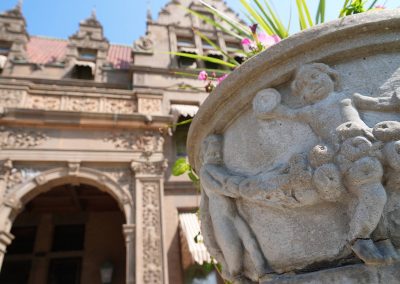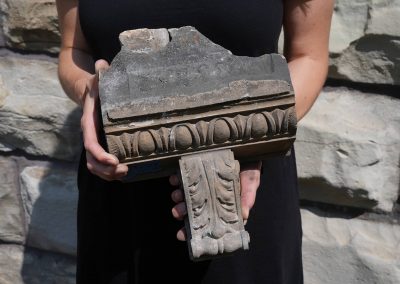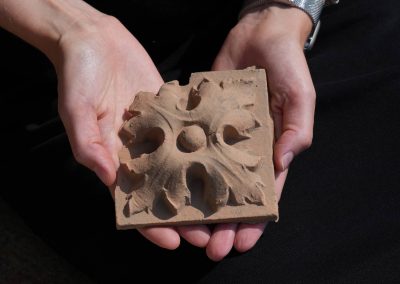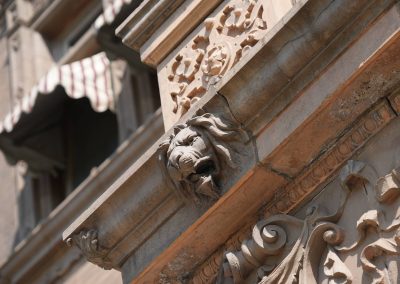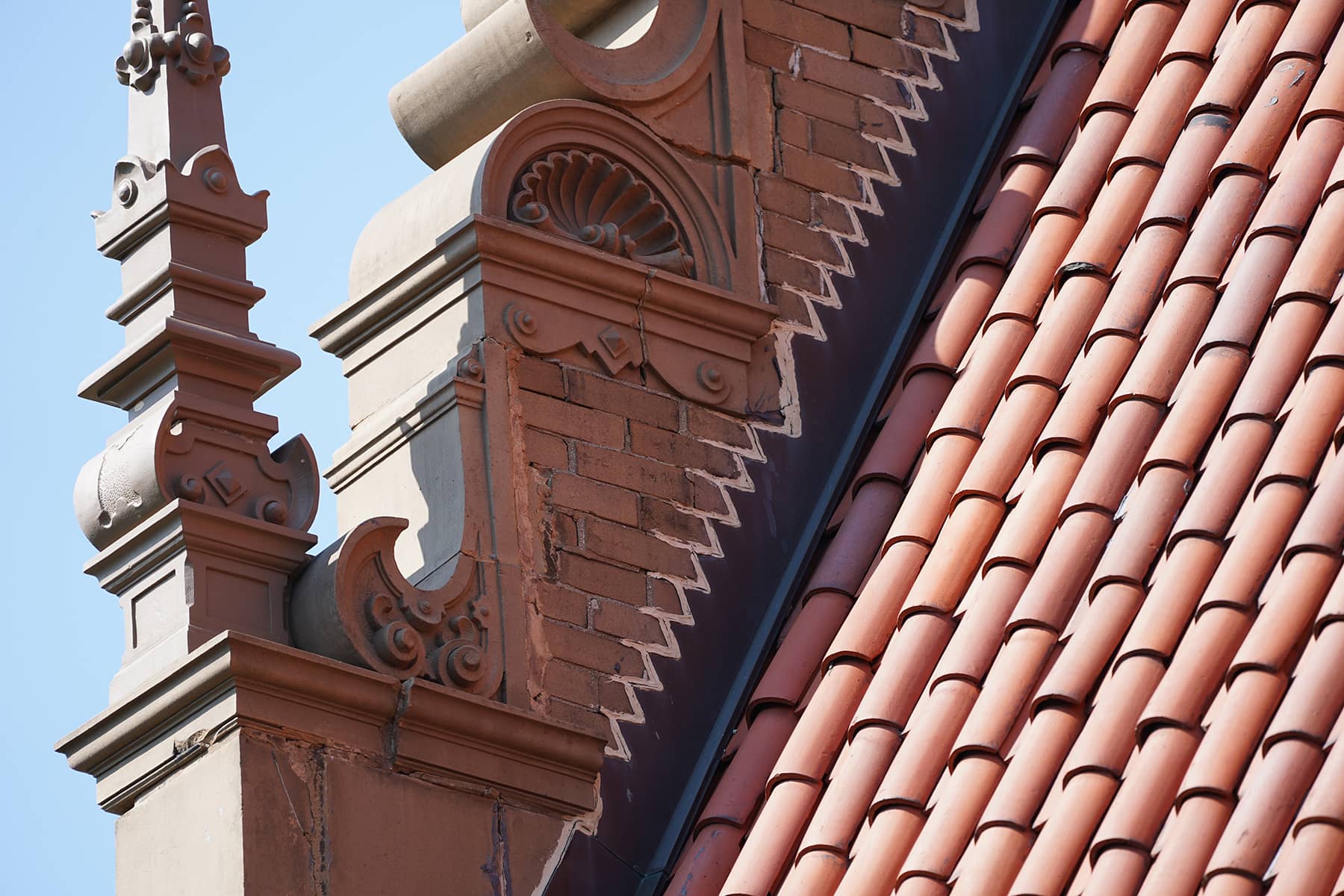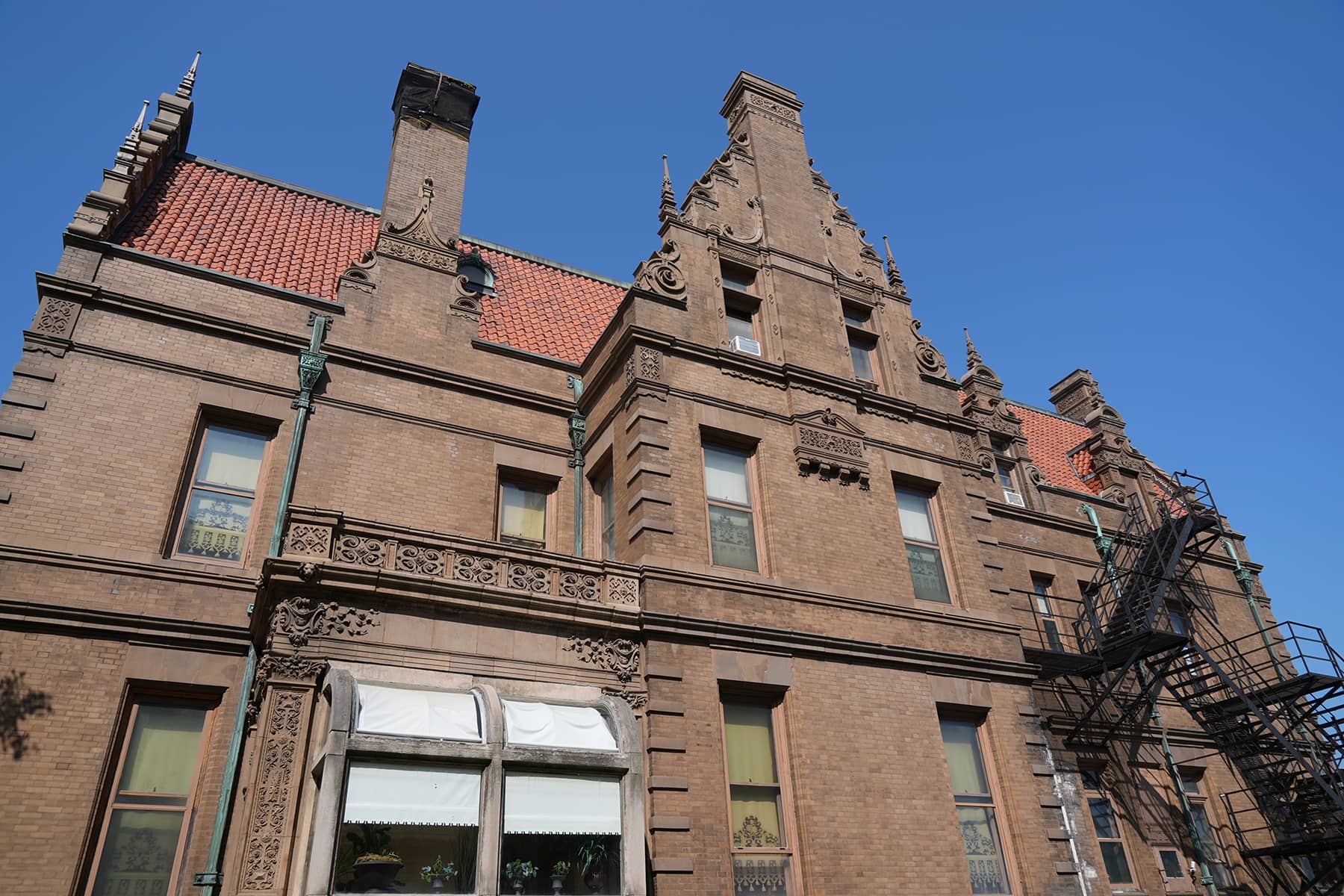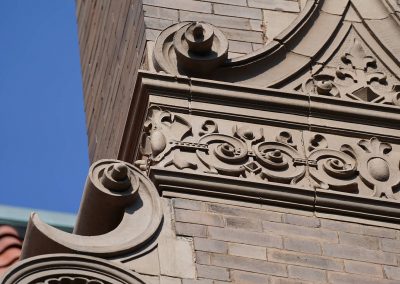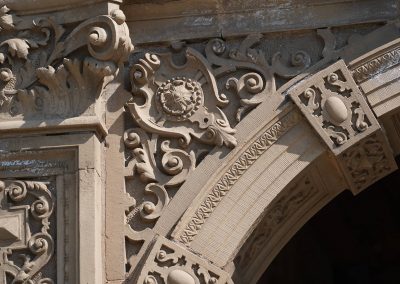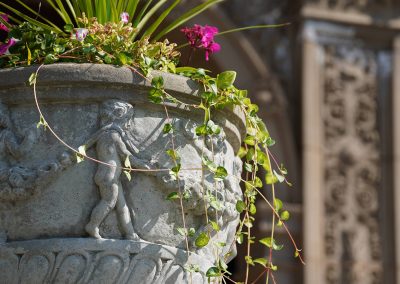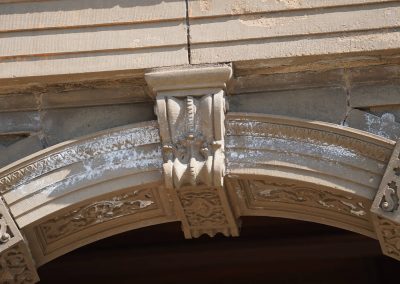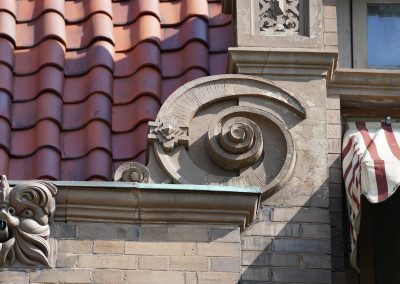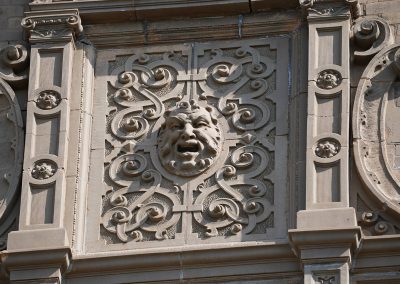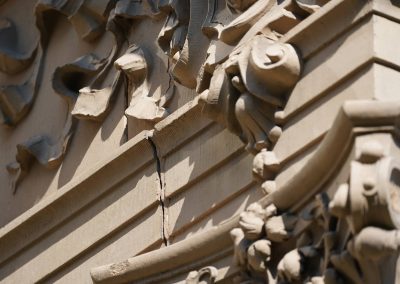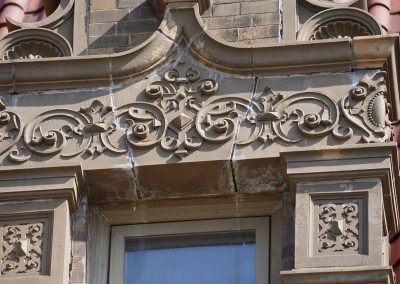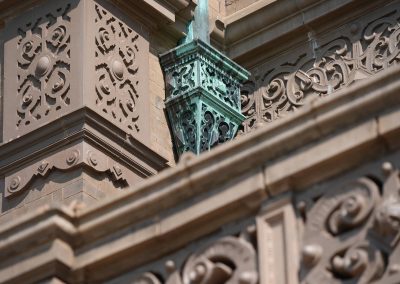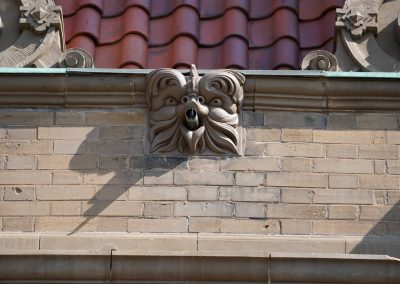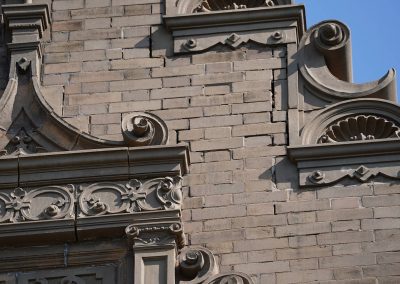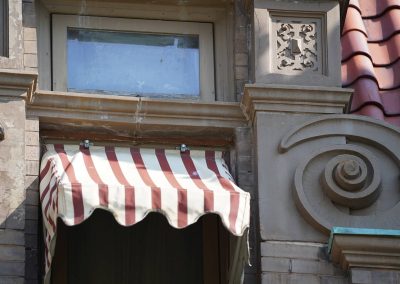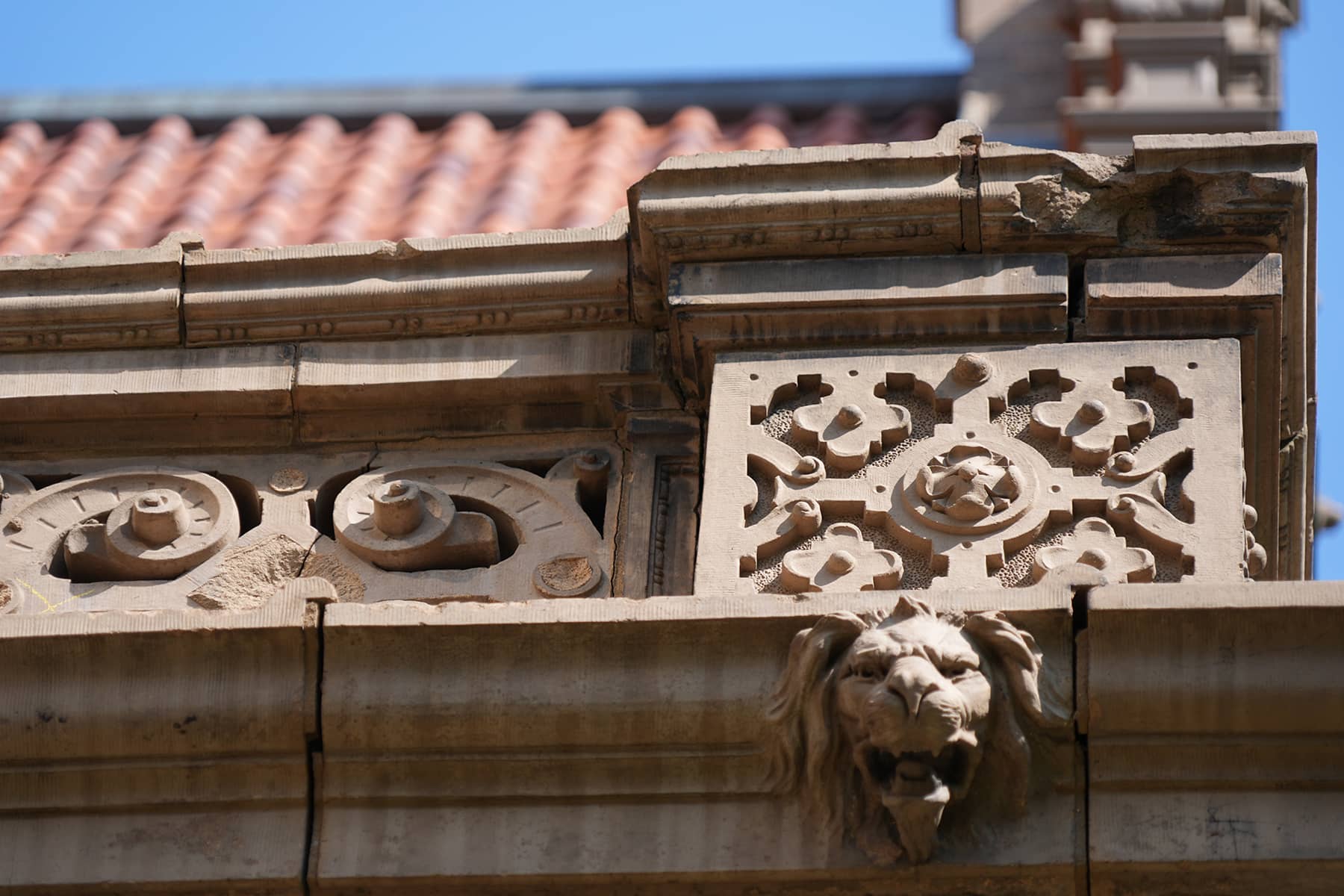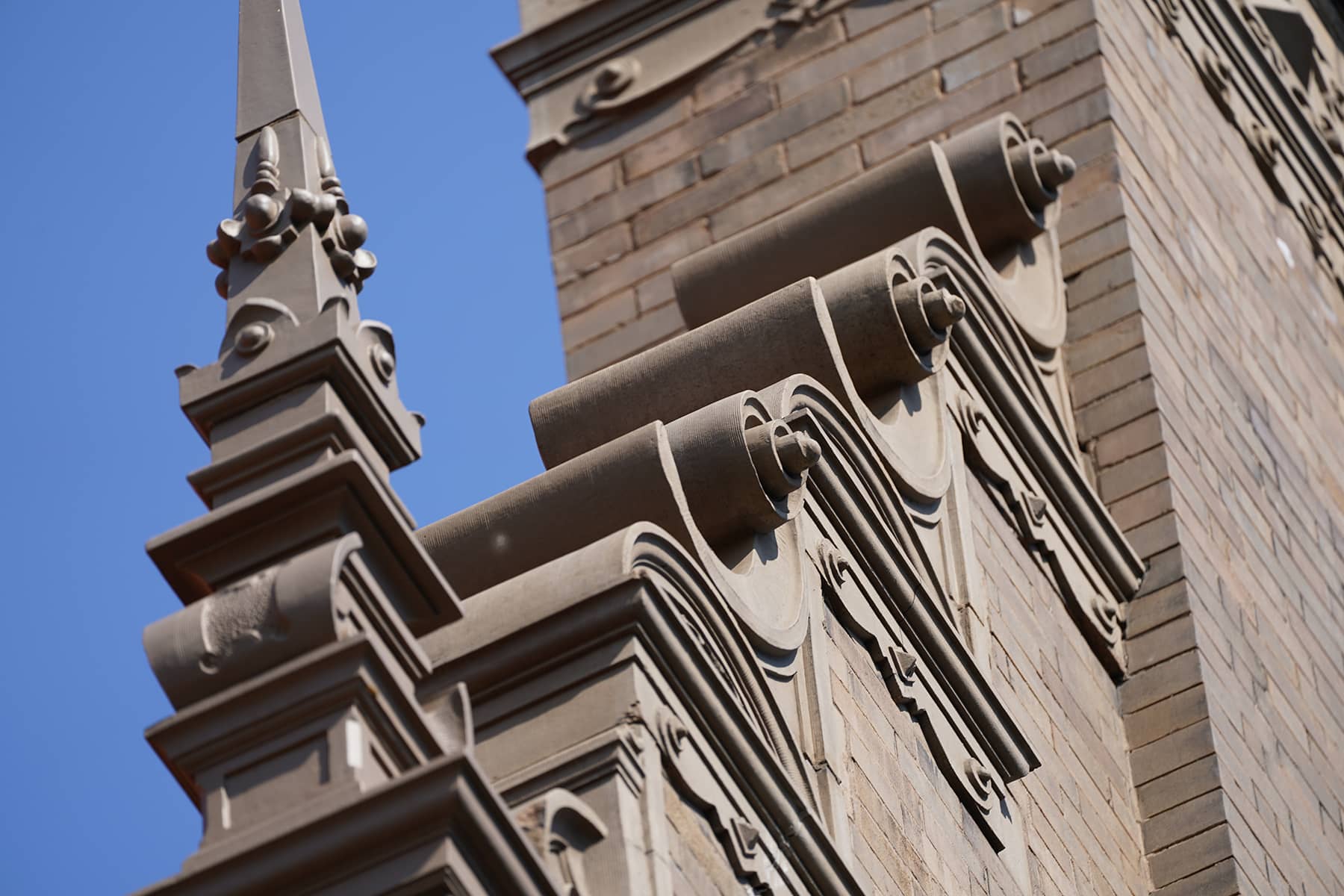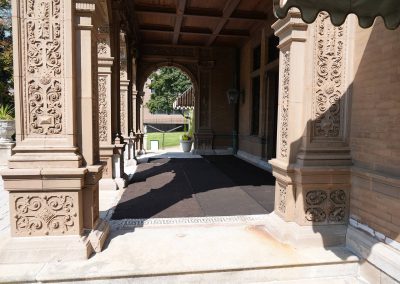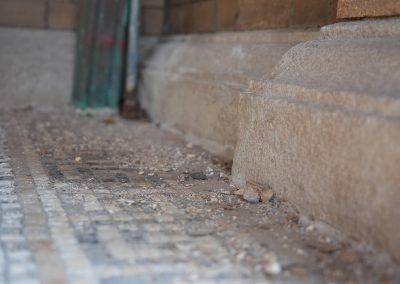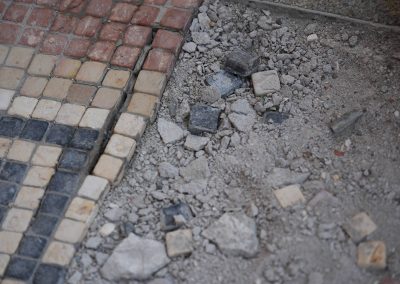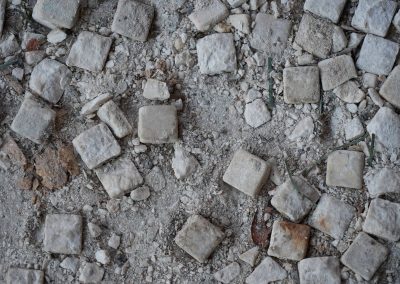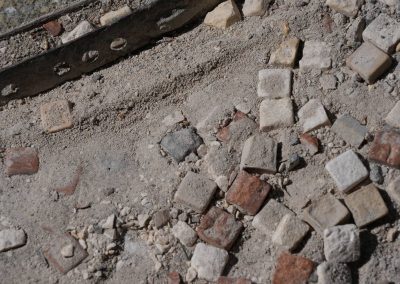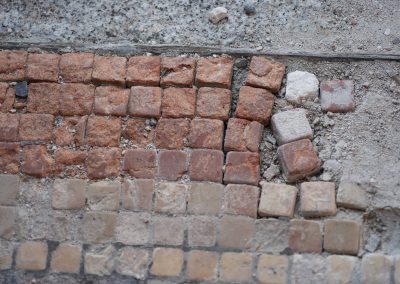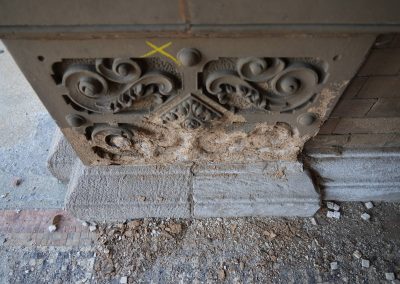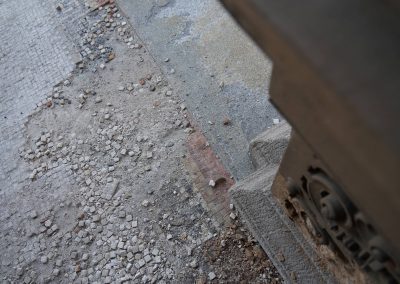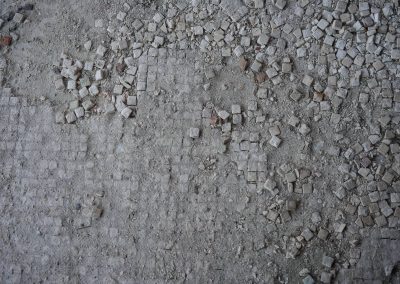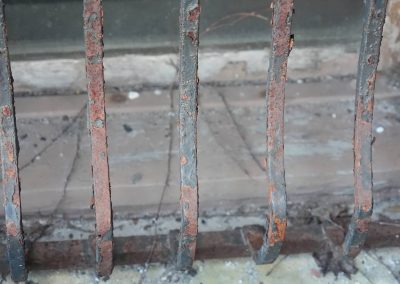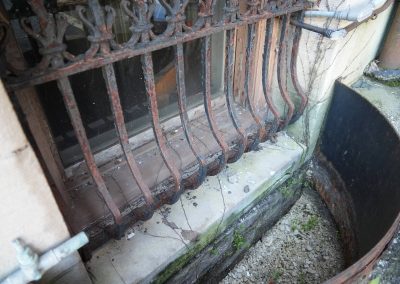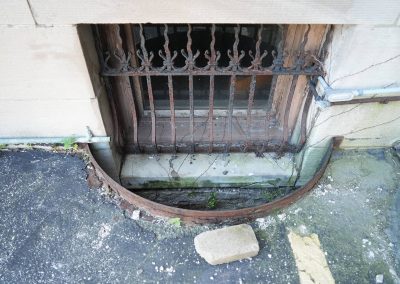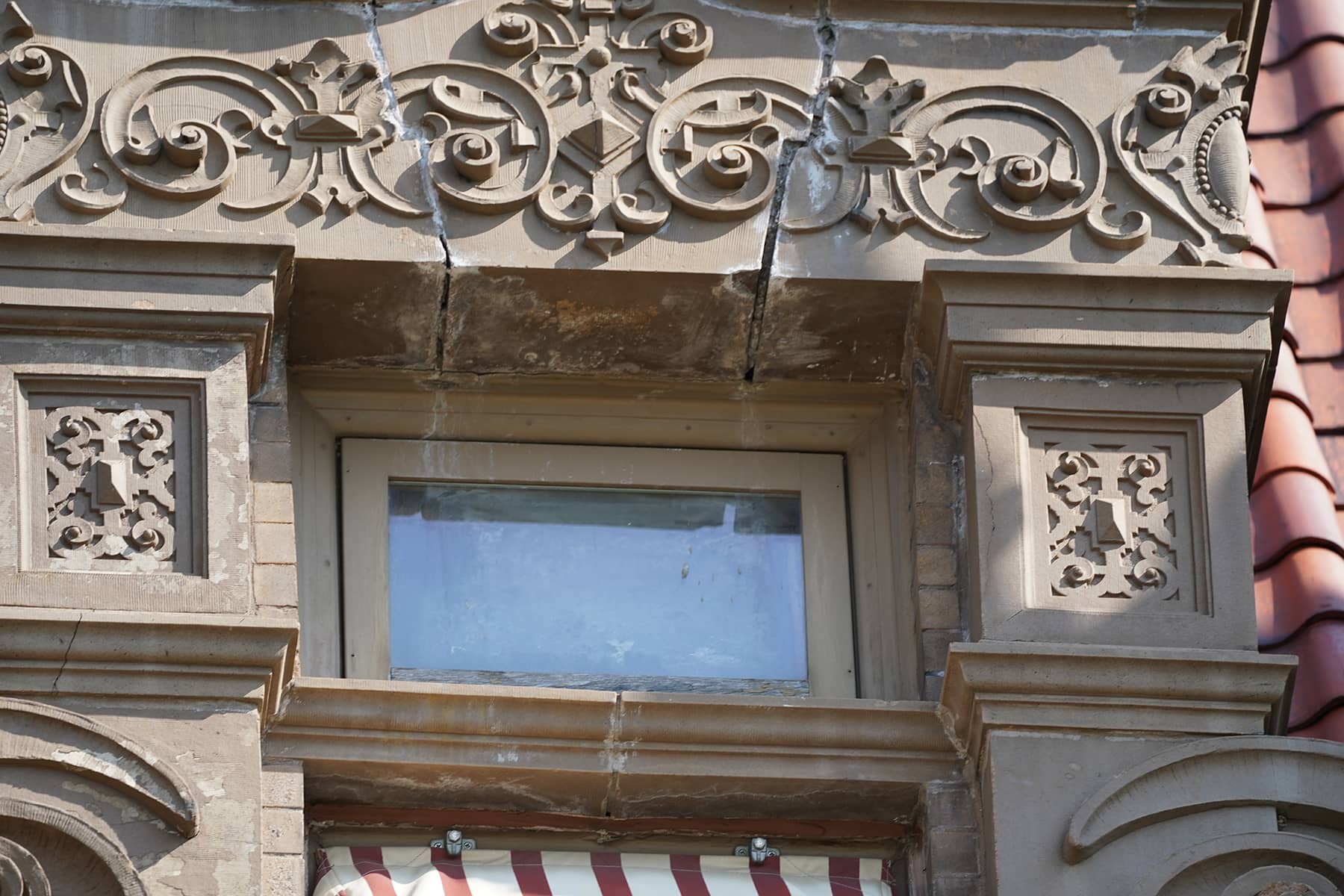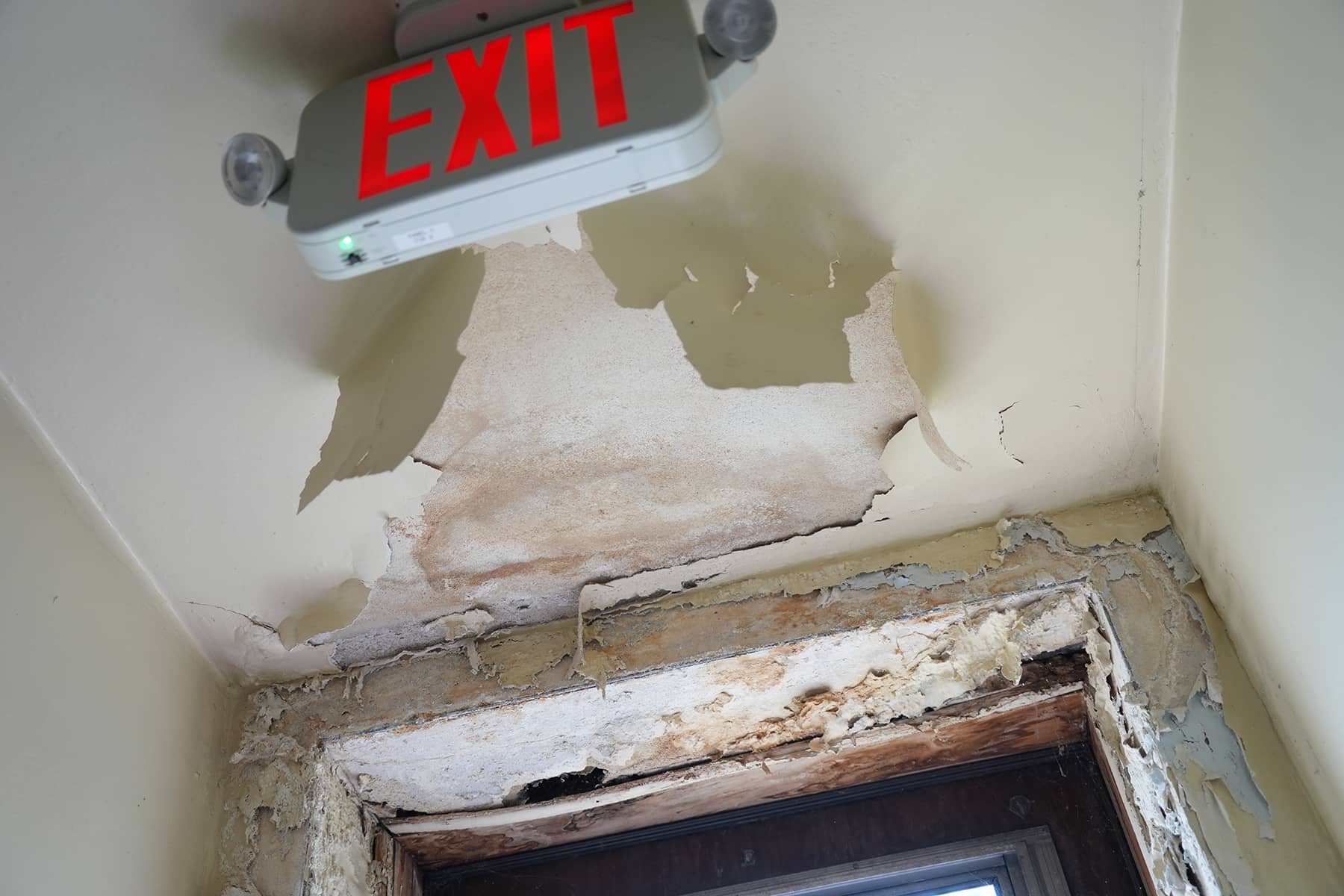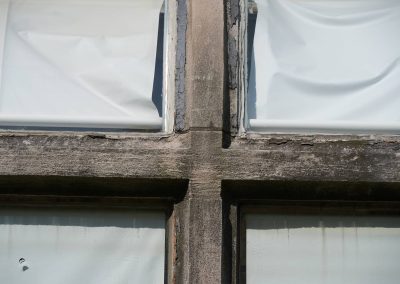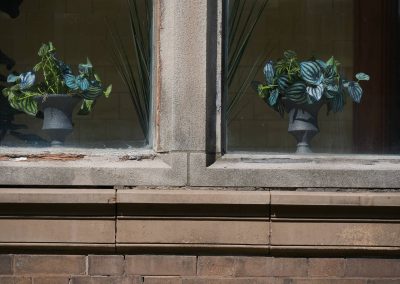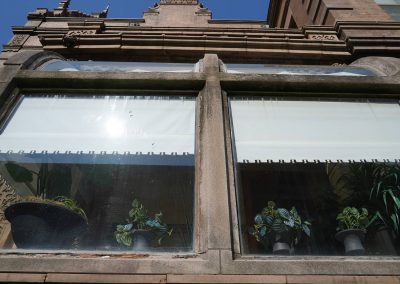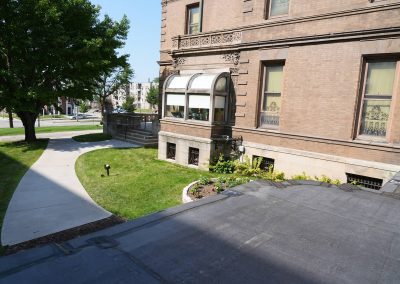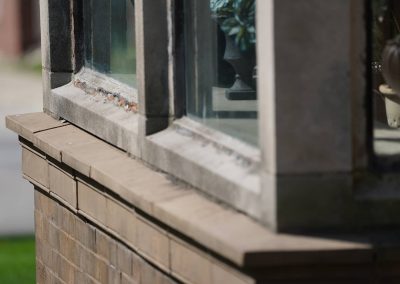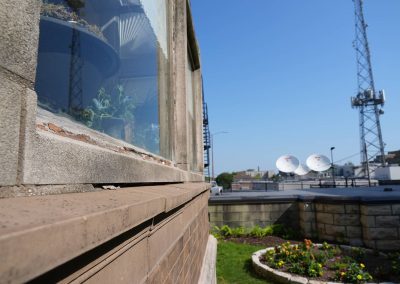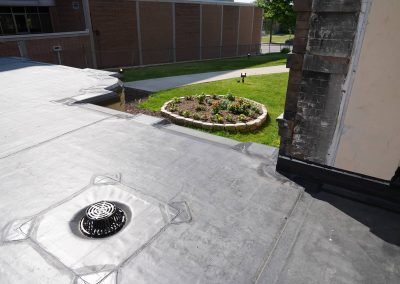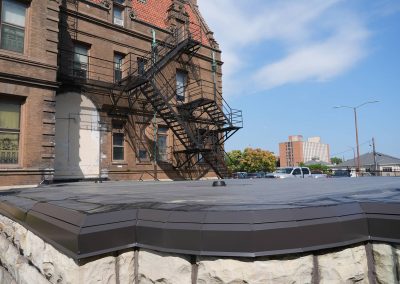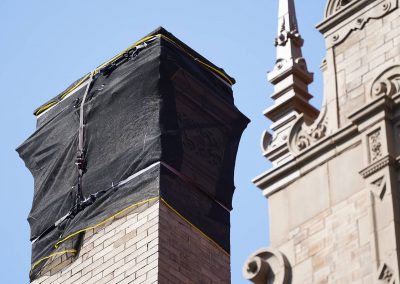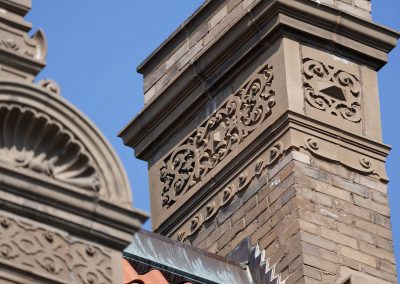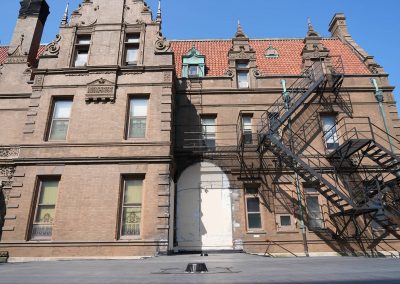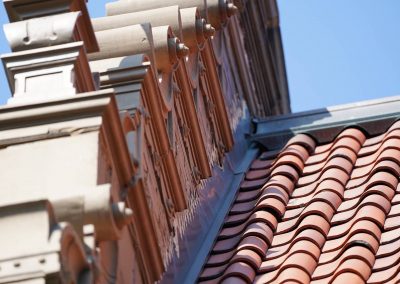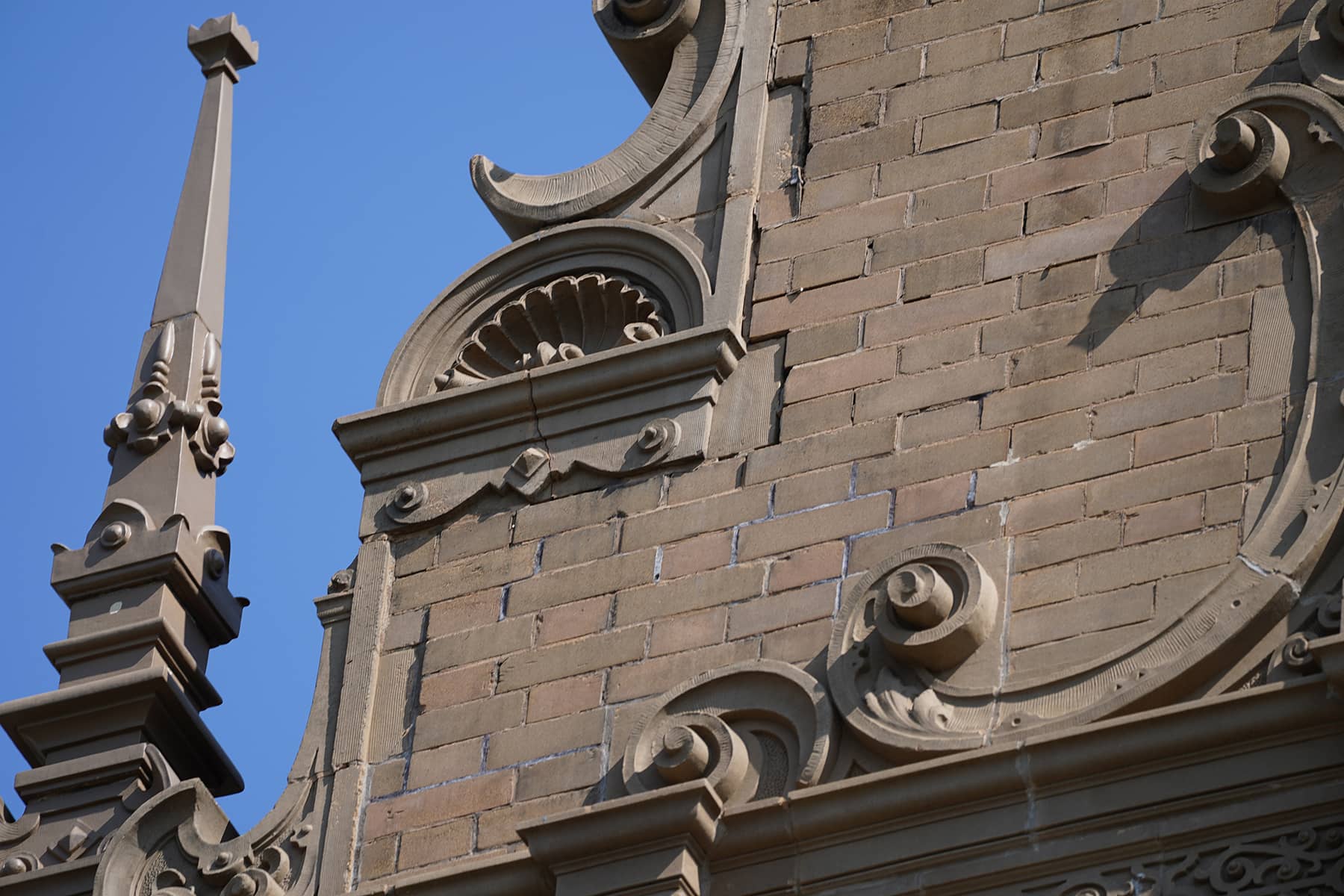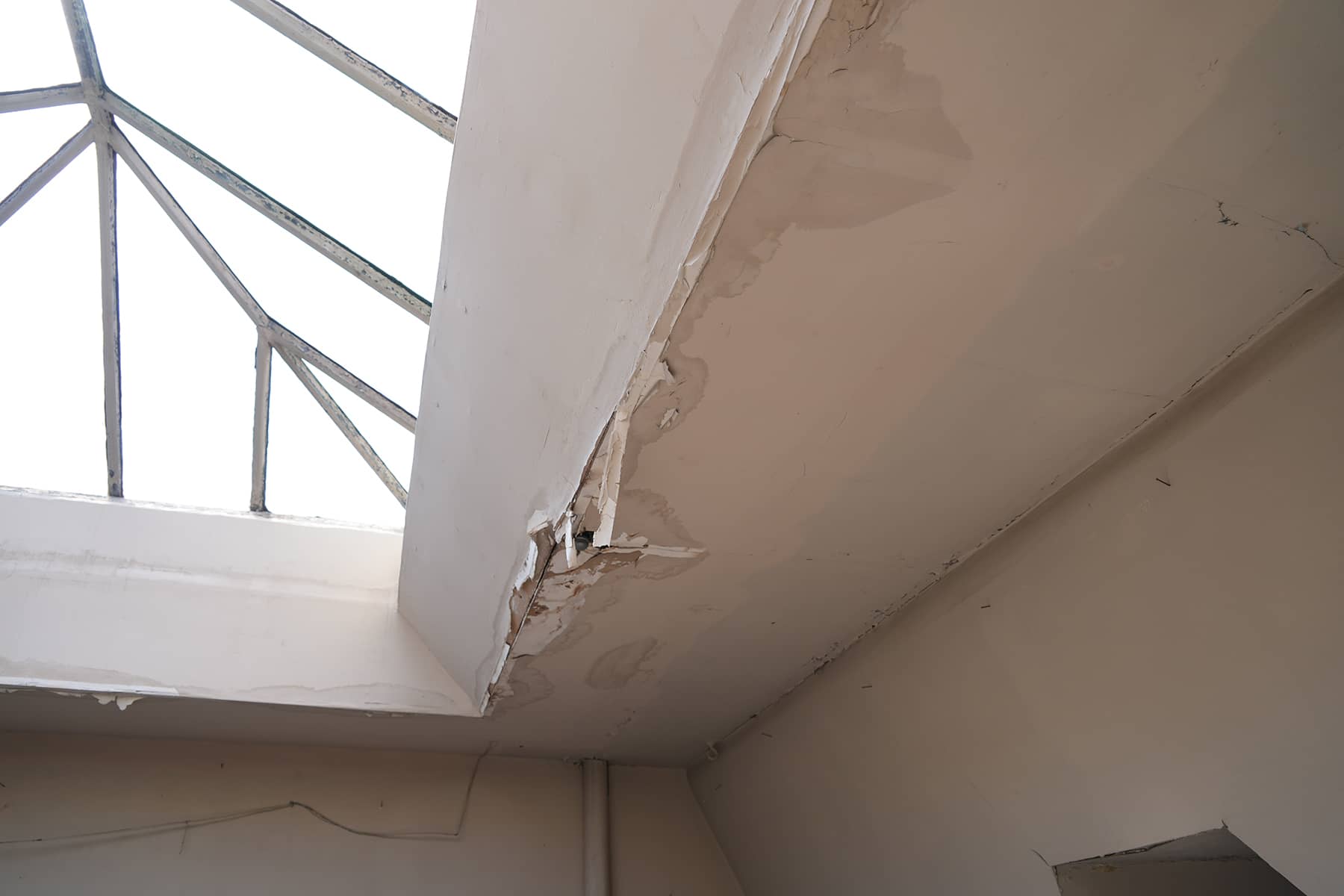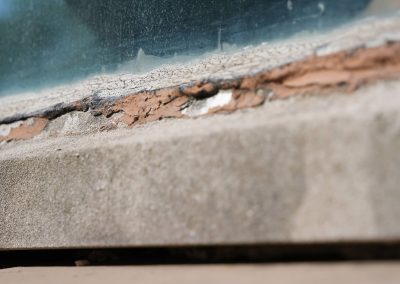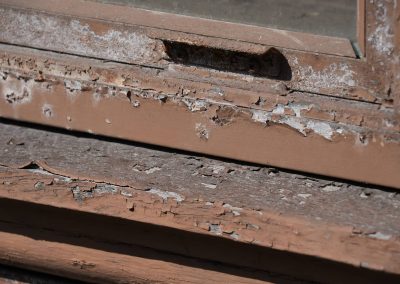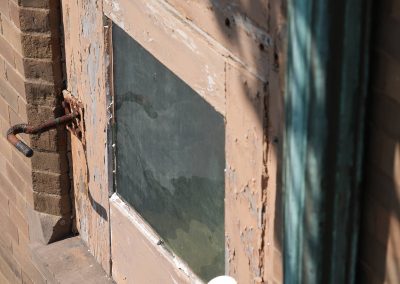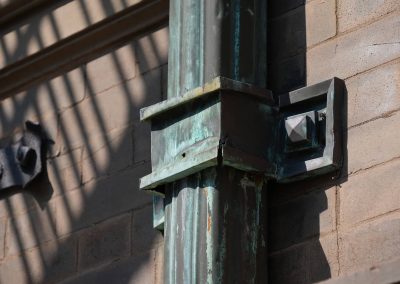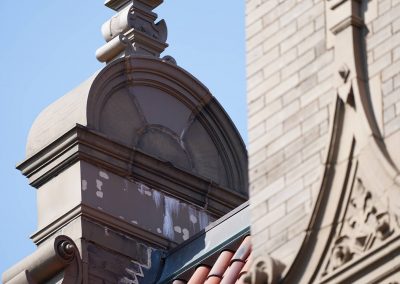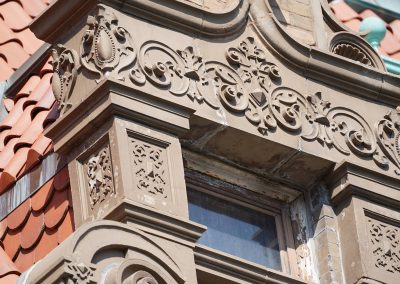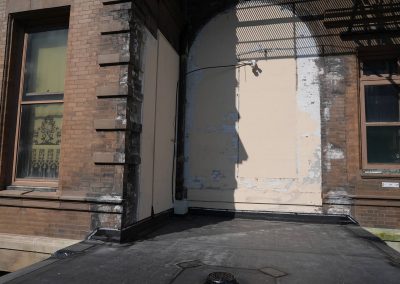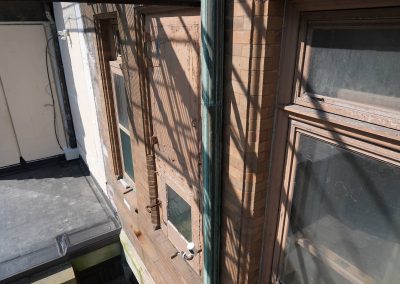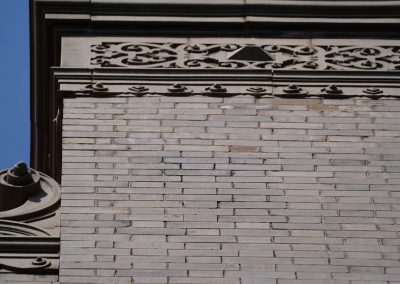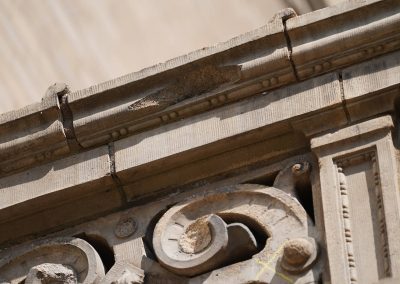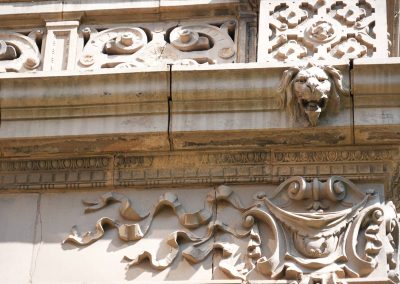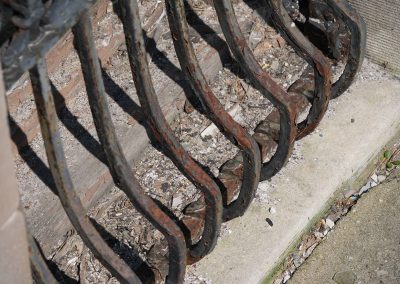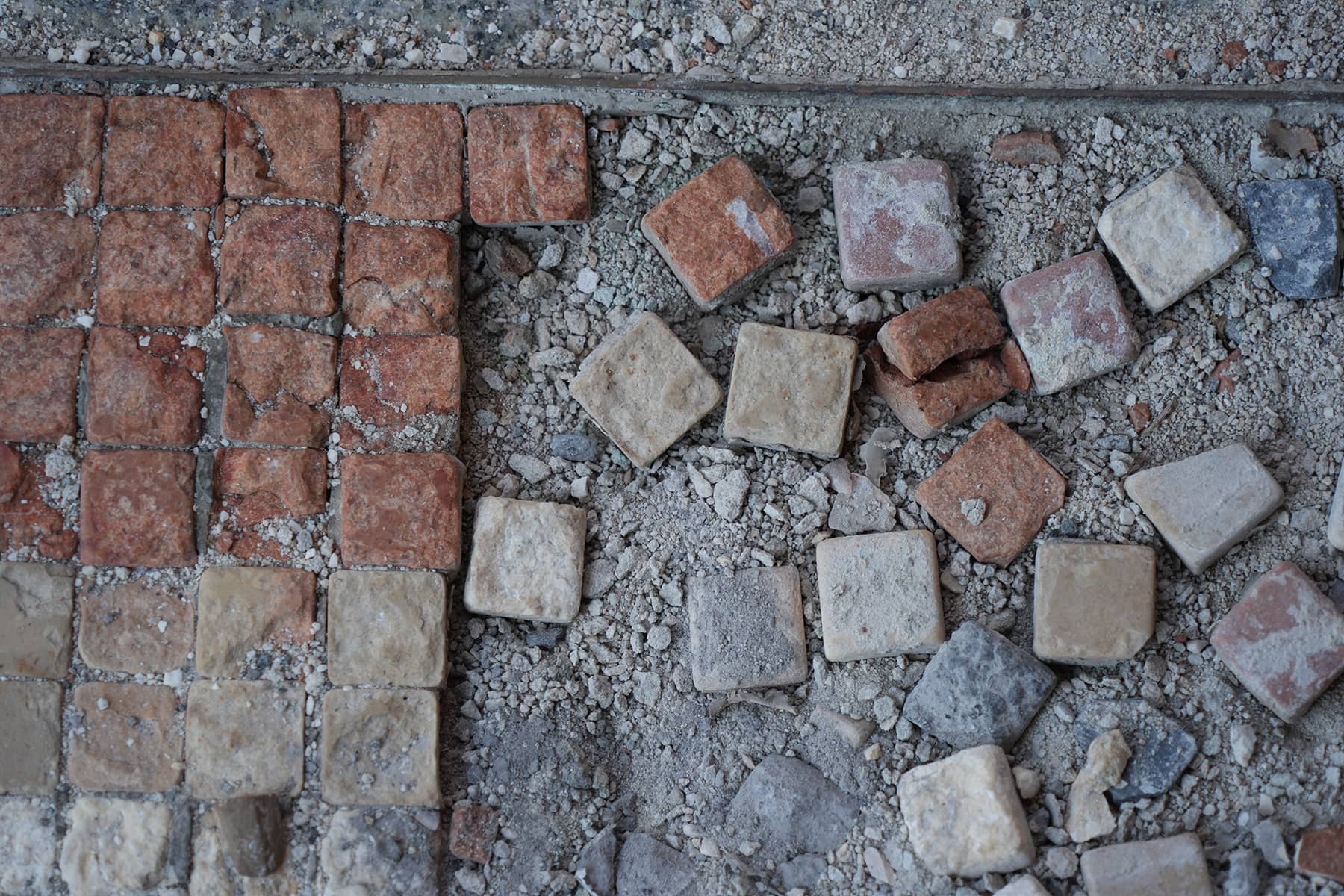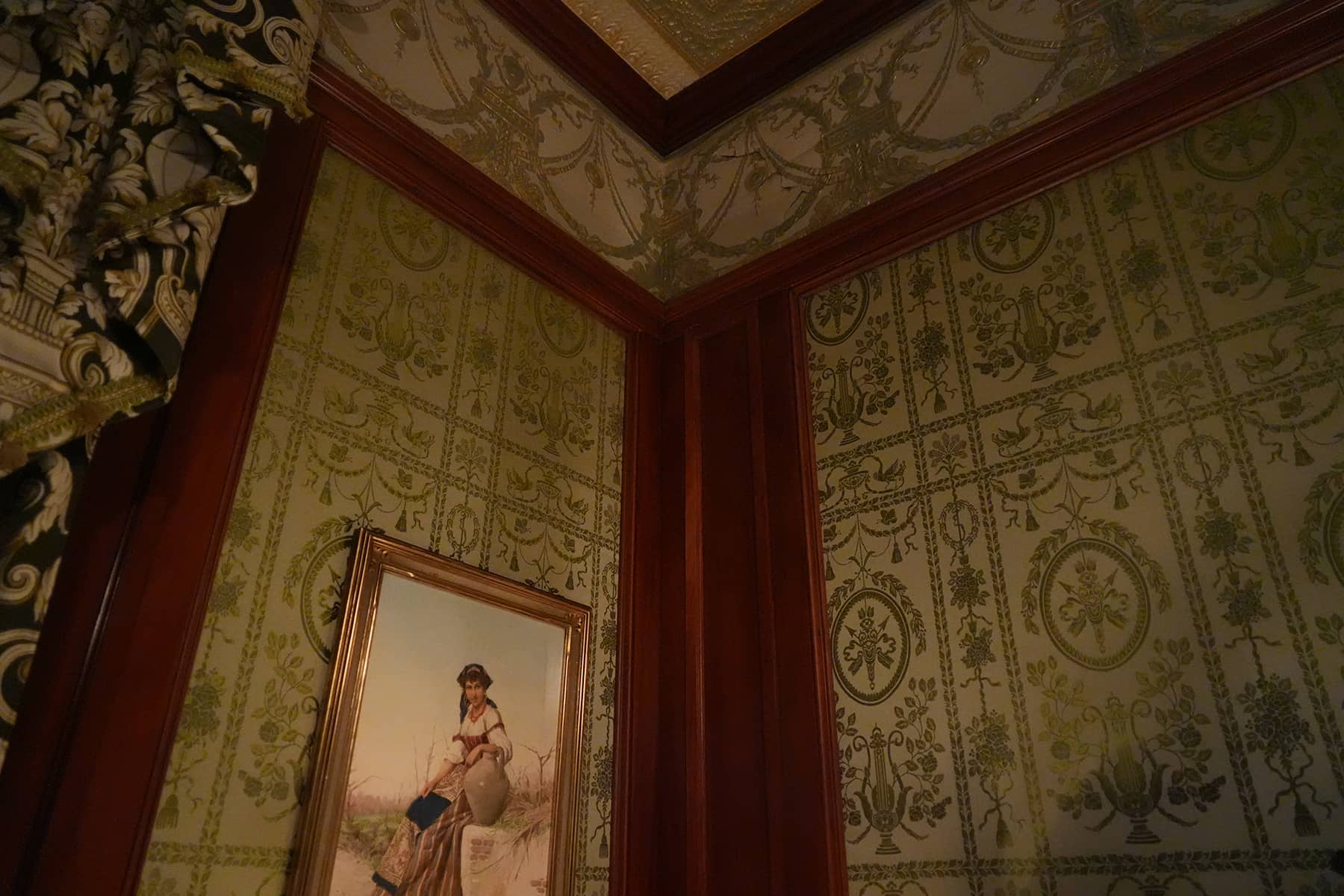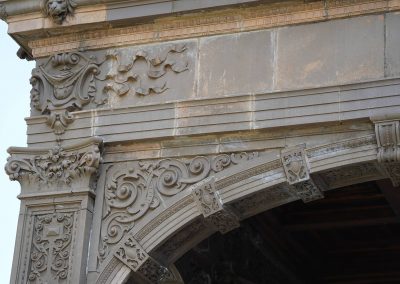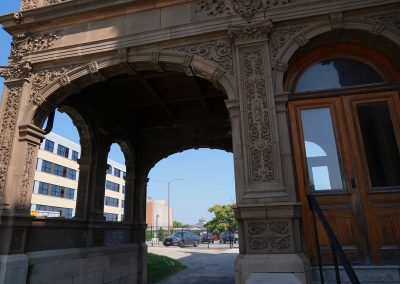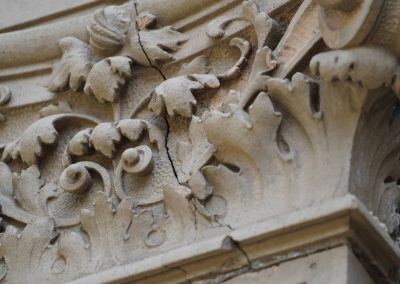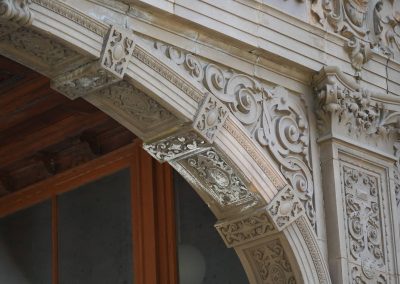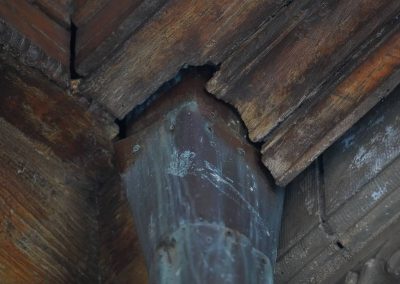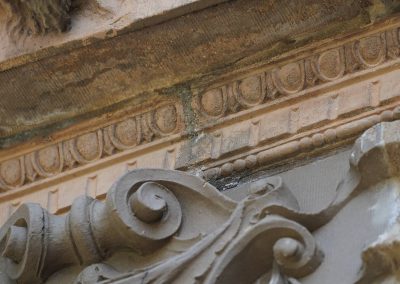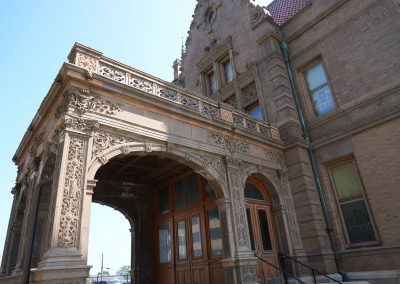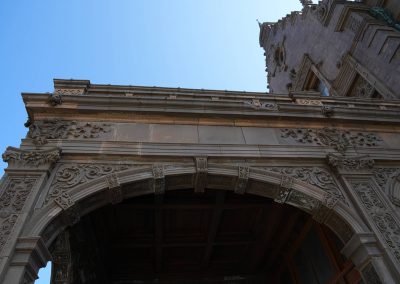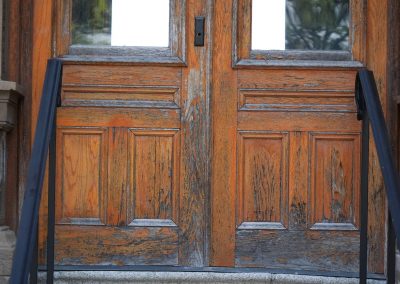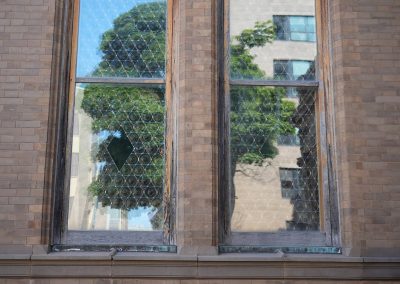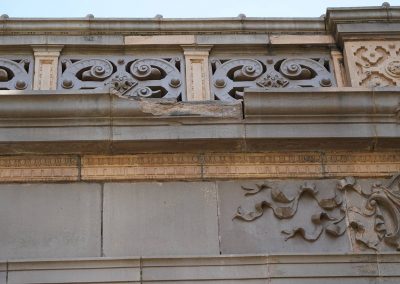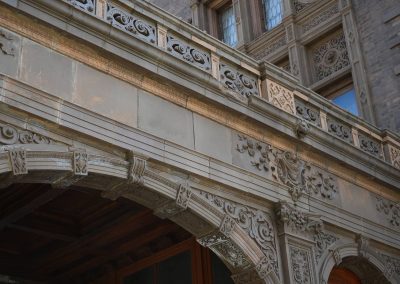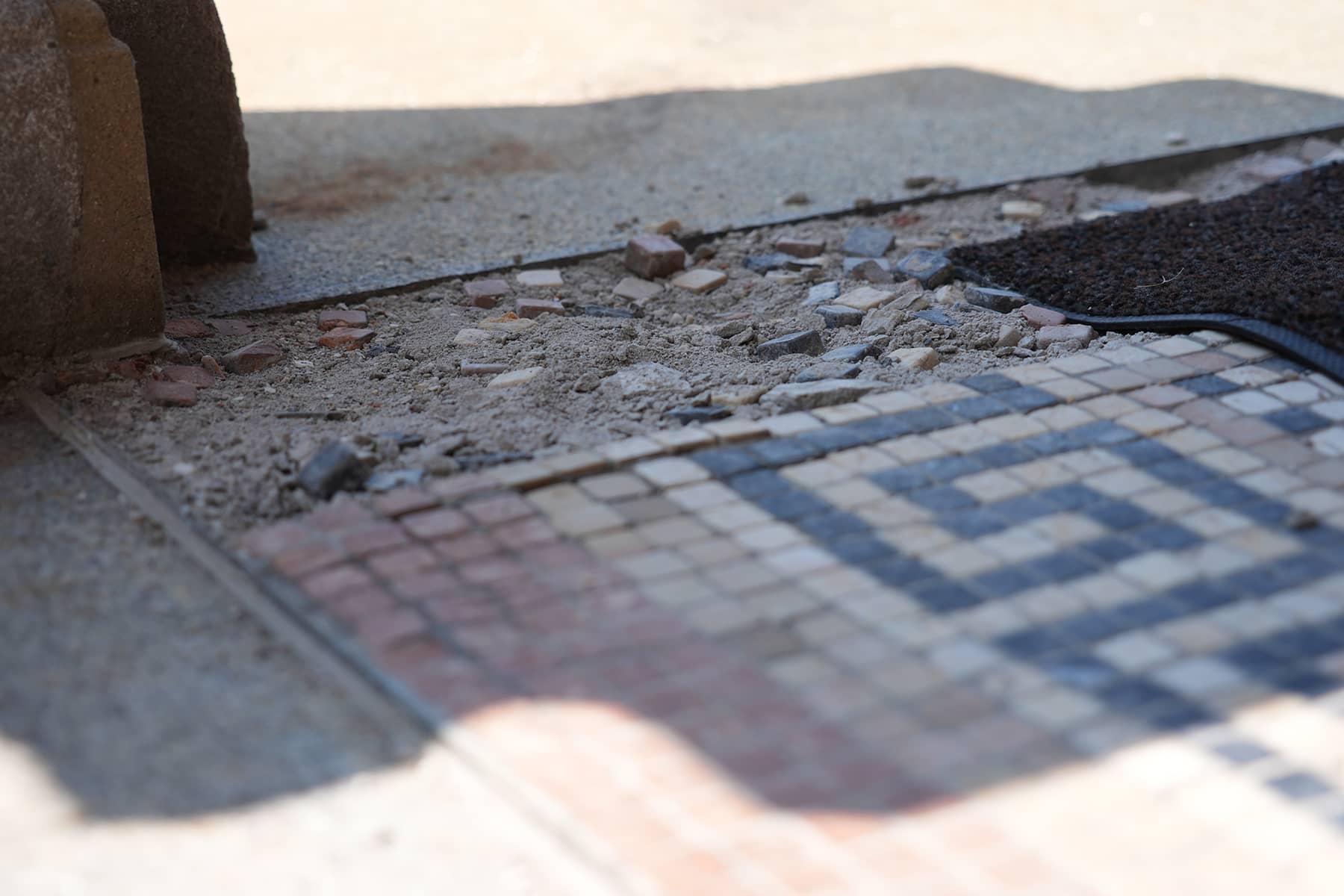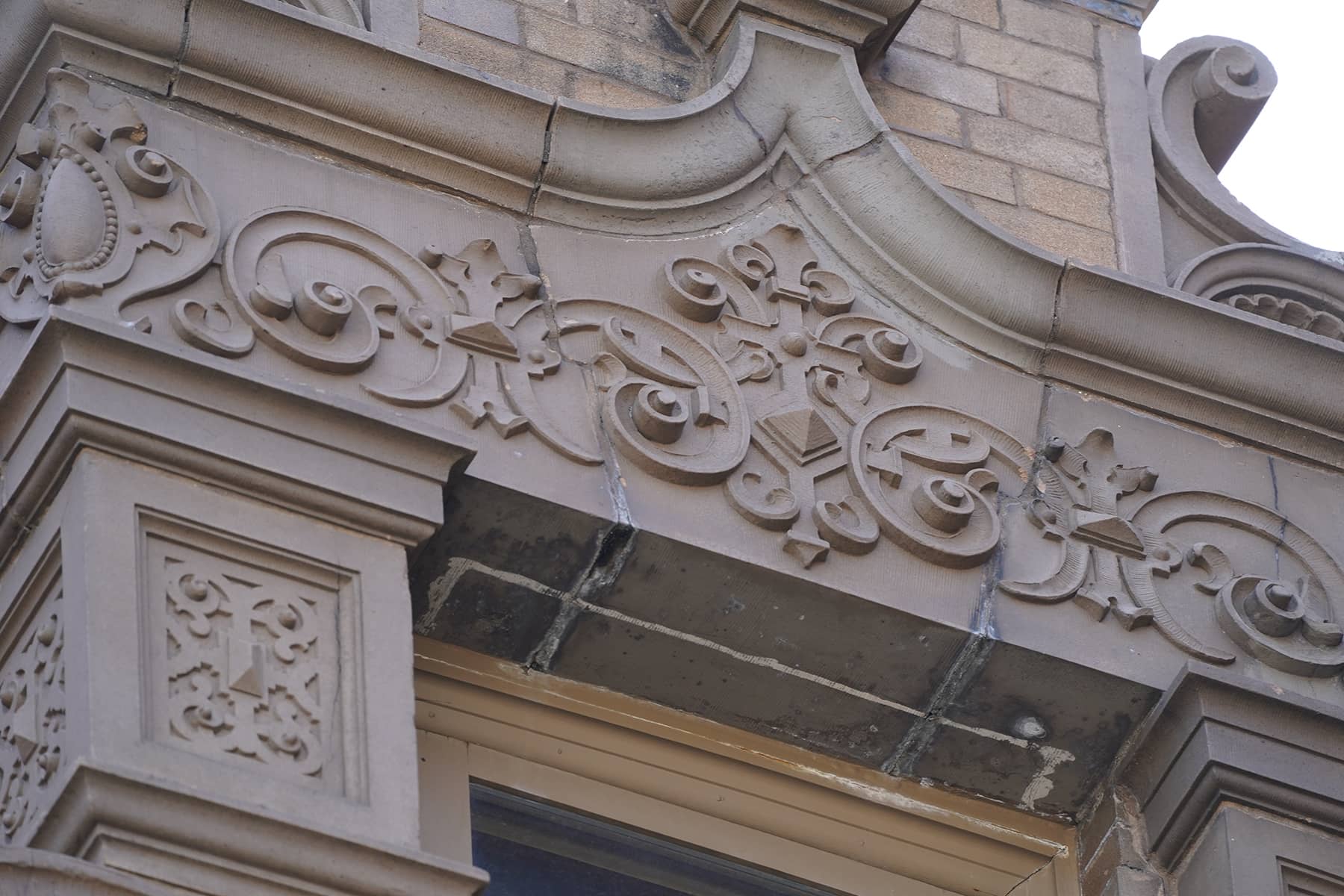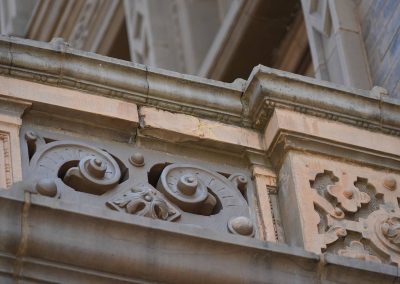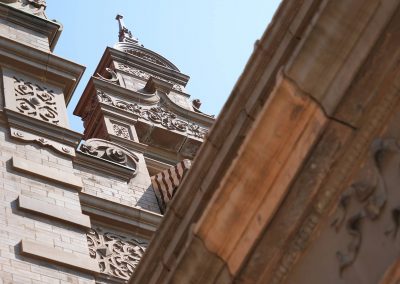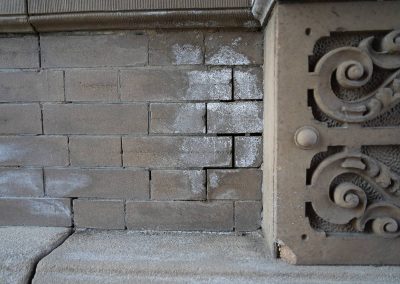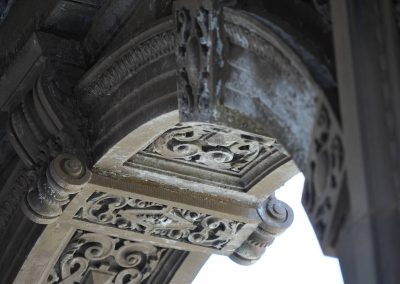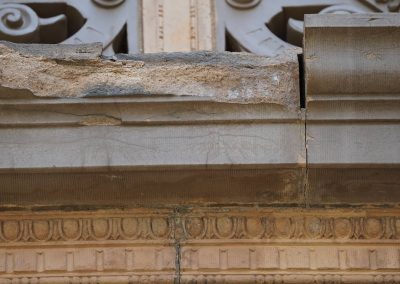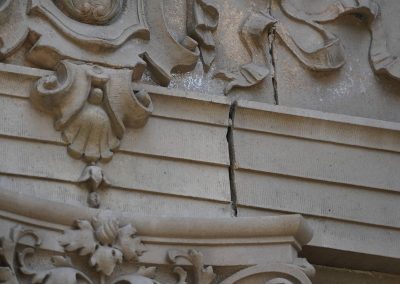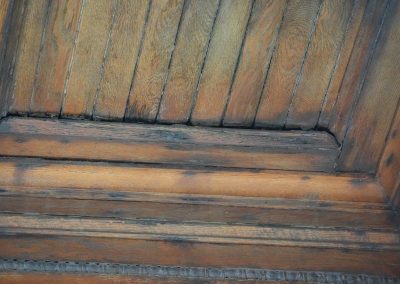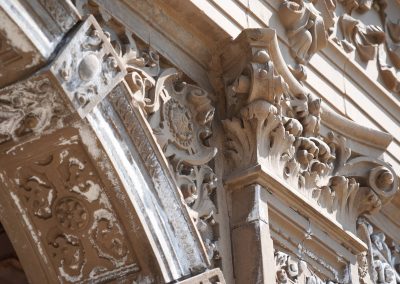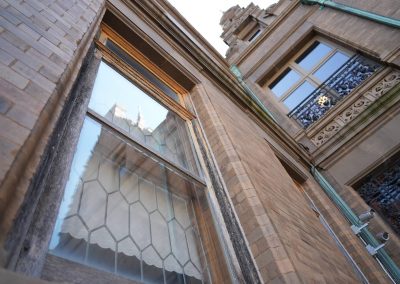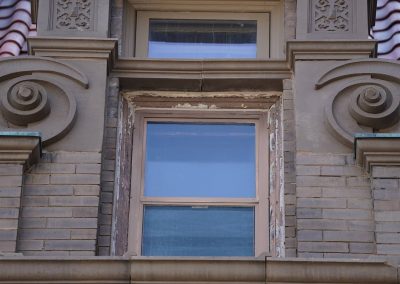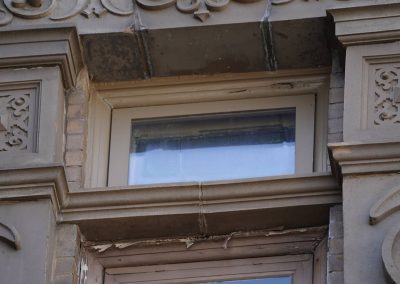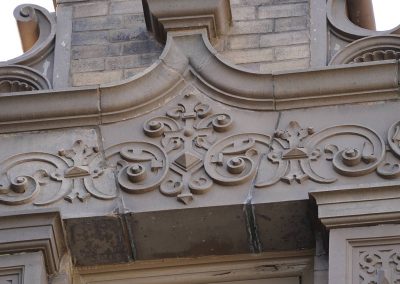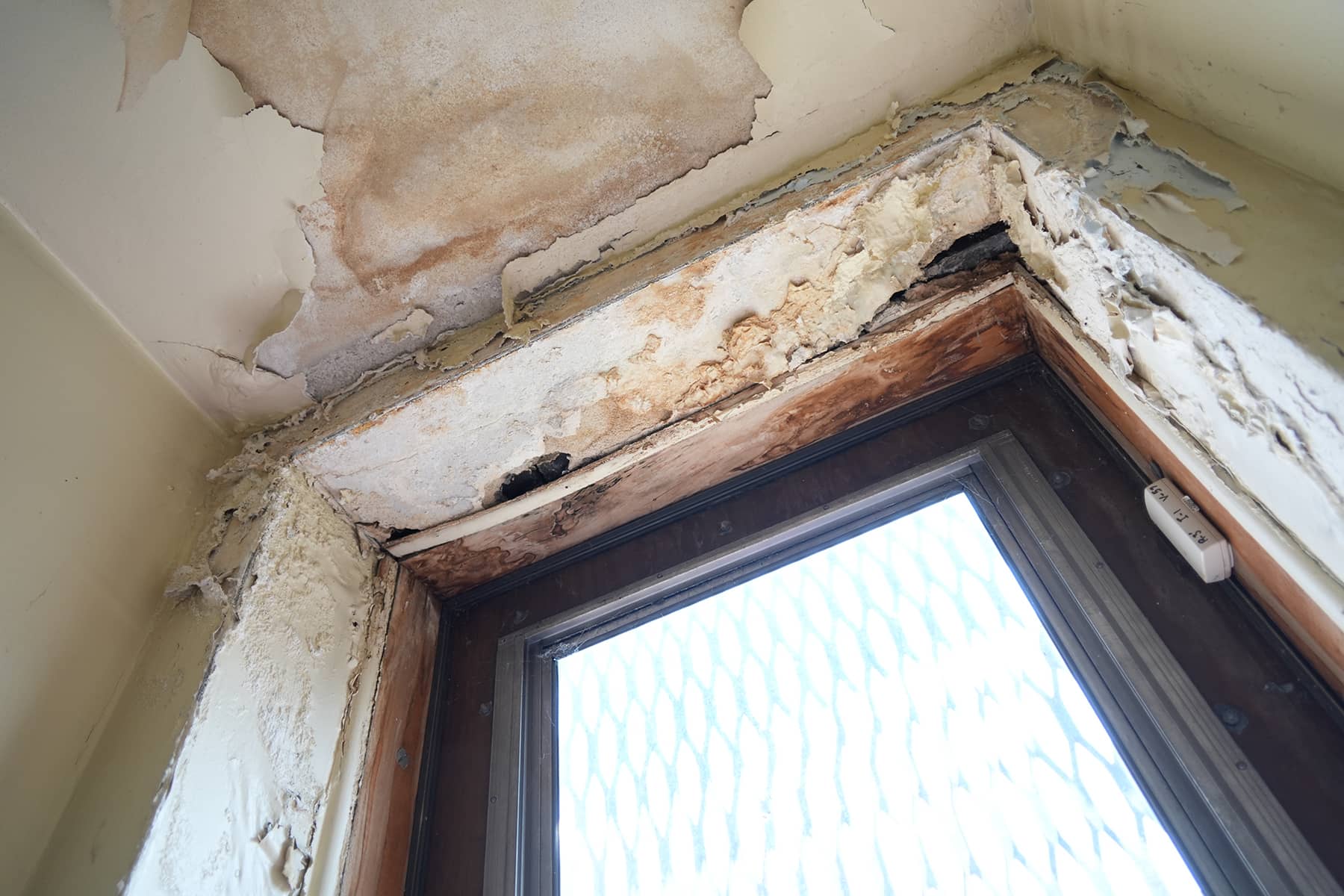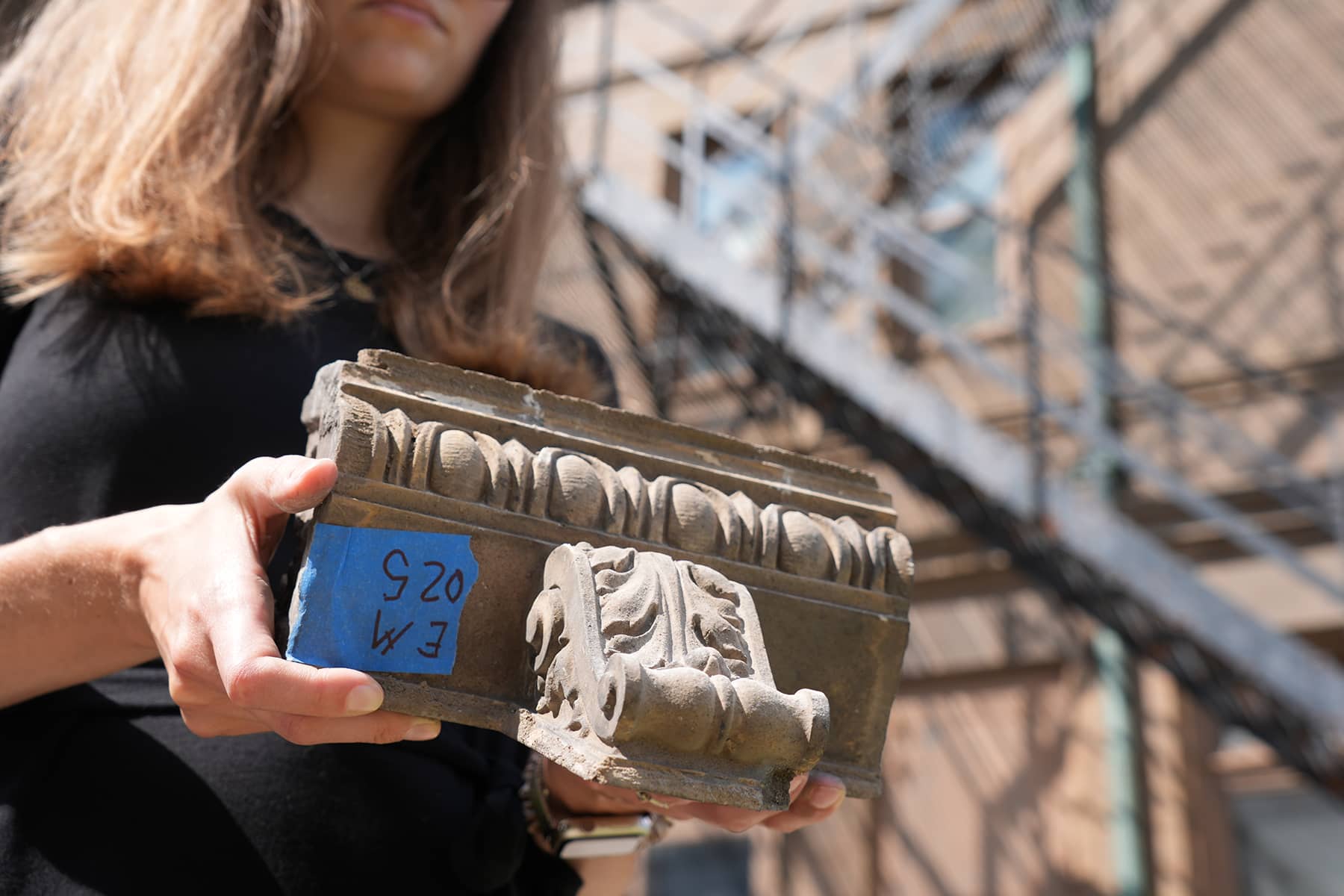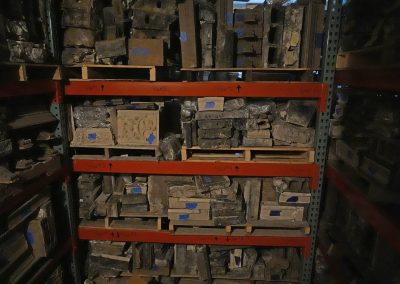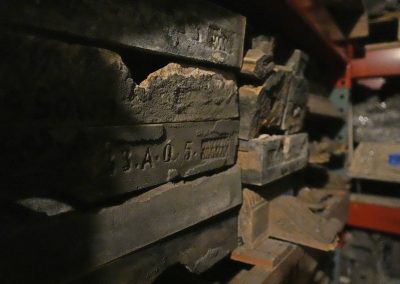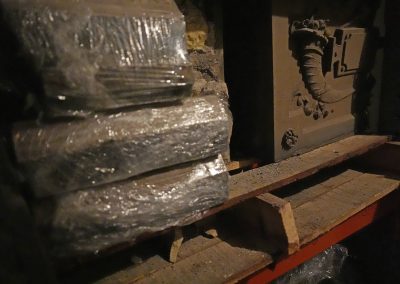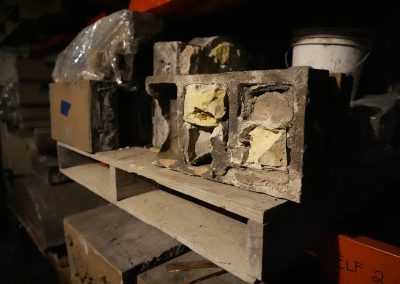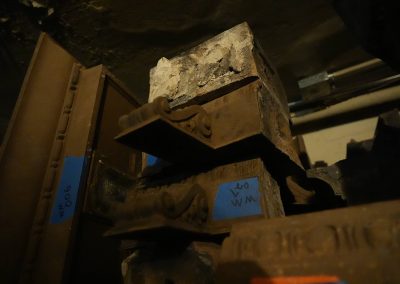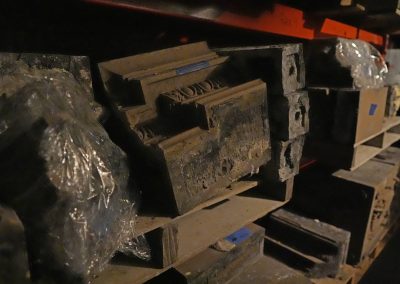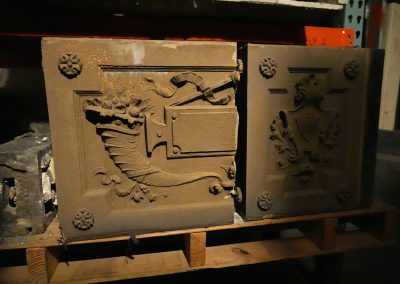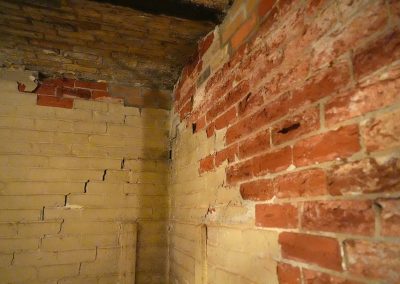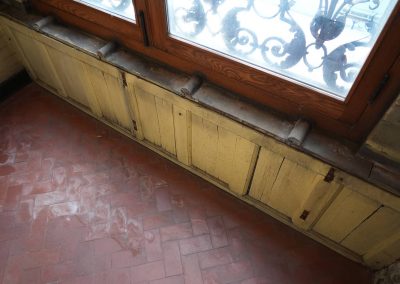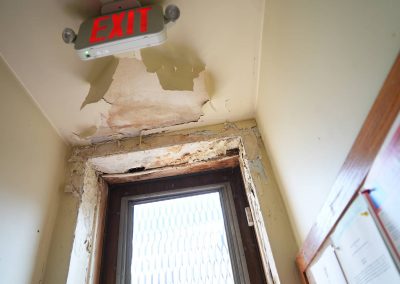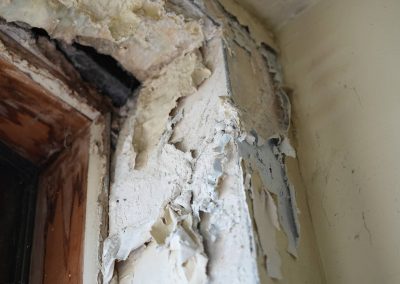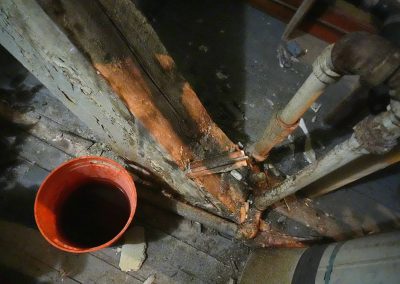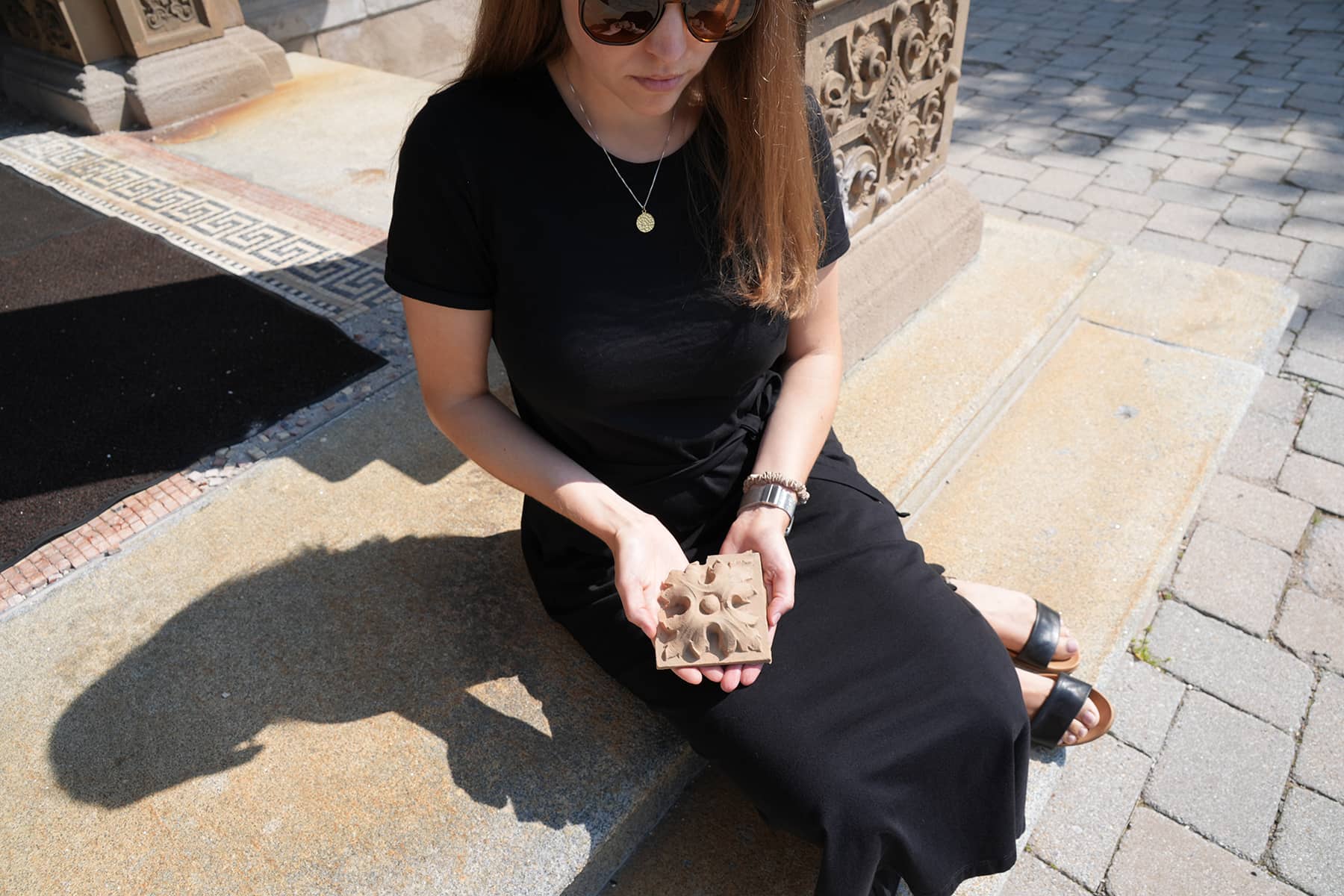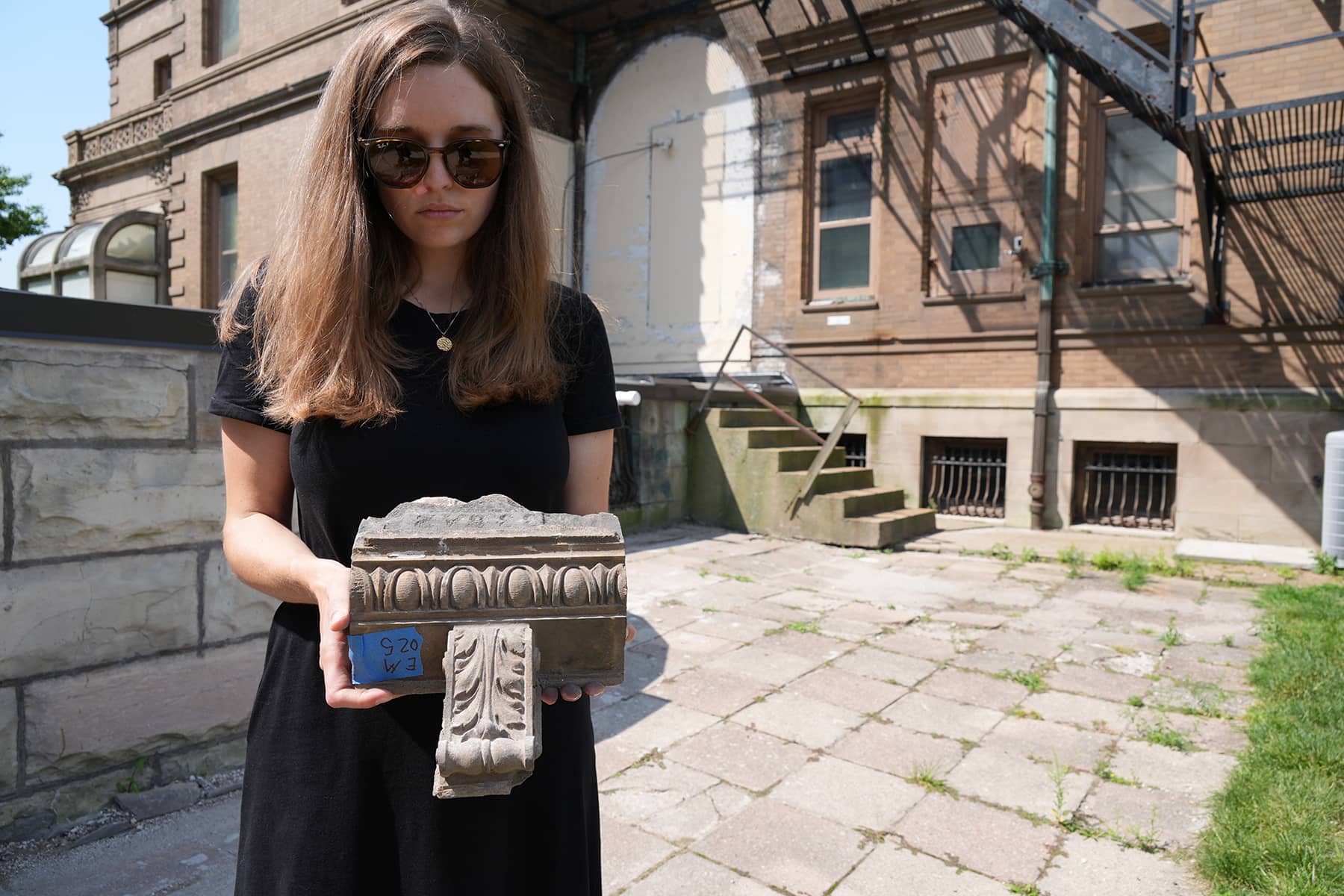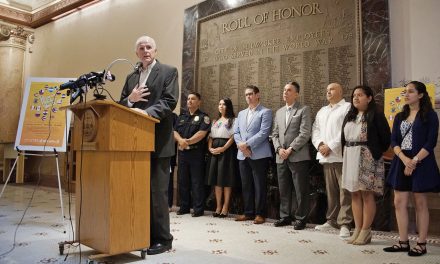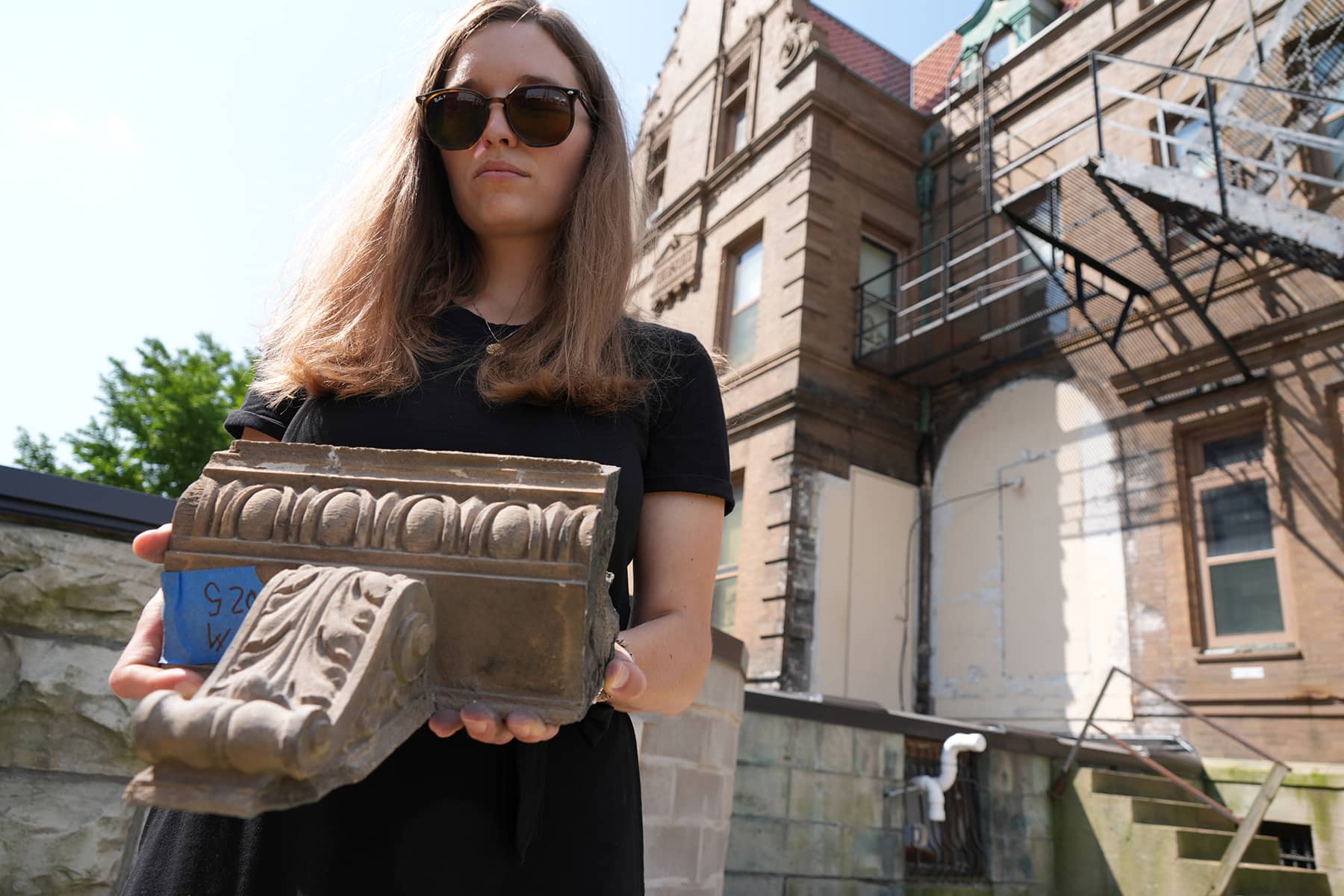
Known as “Milwaukee’s Mansion,” the home of Captain Frederick Pabst is one of the Brew City’s most iconic landmarks. It also faces another pivotal moment in its more than 130-year history.
The Pabst, Present, & Future campaign aims to restore and preserve the iconic building, ensuring that it remains a vital part of Milwaukee’s cultural landscape for generations to come.
Much of the Pabst Mansion’s maintenance has been deferred, dating back to when the Catholic Archdiocese of Milwaukee decided to sell the house in the mid-1970s. The primary reason for the sale was due to the extensive maintenance needed, which has only increased in scale since then. Previous decades of neglect have finally arrived at a breaking point where the restoration can no longer be delayed.
“One of the challenges of this campaign is that the extent of the damage is not always visible. When you visit, you might notice a small crack, but what lies behind it is much more severe, affecting both the exterior and interior,” said Jocelyn Slocum, Director of the Pabst Mansion. “If we don’t act now, it will be impossible to solve the problem.”
The hidden nature of the damage was one of the primary reasons the restoration has been delayed for so long. From the outside, the mansion still looks grand and imposing, but as Slocum pointed out, the issues lie beneath the surface.
“We’ve been warned that we only have a limited time before some of these structures, especially the gables, become critically compromised,” said Slocum. “So the underlying issues are significant, and ignoring them any longer would put the future of the Mansion at risk.”
Captain Pabst touched and shaped Milwaukee in ways that can still be seen today. His legacy is visible in the architecture of the Pabst Theater, the enduring impact of the Wisconsin Humane Society which he co-founded, and the world-renowned Pabst Brewery. Yet among all these contributions, the Pabst Mansion is perhaps the most personal and enduring symbol of his connection to Milwaukee.
Built in 1892 for the famed beer baron, the mansion has stood as a symbol of Milwaukee’s precious heritage. It is one of the few remaining Gilded Age mansions in the city, a time when Milwaukee was known for its opulent architecture and thriving brewing industry. Milwaukee grew significantly because of its beer production, and Captain Pabst played a crucial role in that growth, with his influence extending far beyond brewing.
“The mansion used to be among the 70 of its kind in the neighborhood, along what we know as Wisconsin Avenue today. But it’s the only one left. Beyond its historical value, the mansion offers a unique experience with its art collection and preserved interiors,” said Slocum. “We need about $5.2 million to restore the mansion’s exterior, including the roof, tuckpointing, window sills, and the front porch, which is crumbling. Once the areas are restored, the mansion will be protected for at least another 50.”
Recent efforts were made to address some of the more critical issues, including the dismantling of the mansion’s pavilion. But Slocum said the overall restoration campaign was a once-in-a-generation project. If Milwaukee wanted to save the historical treasure, the public would need to act now.
“We recently took down the pavilion, and by taking down I mean we completely disassembled it. There wasn’t a demolition. There was no wrecking ball. It was taken apart piece by piece, very strategically,” said Slocum. “All the pieces have been retained, cataloged, and thoroughly documented so that the structure can be reconstructed one day.”
According to Slocum, that method allowed the pavilion to be preserved. But the same process, obviously, could not be applied to the house.
“We are doing what we can by repairing each section and each component that needs to be restored, but it all has to be done in tandem. We can’t just do the brickwork and not the roof, because there is still water coming in from the roof, and then that will affect the areas we just fixed,” said Slocum. “So doing the work properly requires the coordination of repairs. Otherwise, as the exterior erodes it will have more impact on the interior spaces.”
While the restoration is urgently needed, securing the necessary funding has proven to be a significant challenge. The Pabst Mansion operates as a private nonprofit, relying on admissions, donations, and rentals for its funding. Unlike other museums in Milwaukee, it does not receive financial support from the city, county, or any university. That has made public support crucial for its survival. Slocum said it has been difficult to bring attention to the mansion’s plight.
“Many people take the mansion for granted, thinking it will always be here, or it’s just a place for tourists rather than appreciating it as a cultural landmark,” said Slocum. “It’s challenging to be a tourist in your own city, but the mansion is worth visiting repeatedly. Even after seven years, I still discover new details and connections to the space.”
Photos of the Mansion from 1897 are used to guide any restorations, large or small. Original elements, like old-growth wood and wall coverings, are irreplaceable and the materials are no longer available. And the required level of craftsmanship barely exists today.
For instance, the Matthews Brothers, a Milwaukee-based company, crafted all the woodwork in the house. From chairs and rails to window sills, and even custom-built furniture to match the rooms on the first floor. Their work was so bespoke that a modern recreation would not capture the same essence or quality. If a reproduction could be achieved it would be prohibitively expensive.
“When this house was originally built, it was equivalent to about $9 million in today’s dollars, including the furnishings. Rebuilding it today would cost closer to $40 million due to the scarcity of these materials and skills,” said Slocum. “Preserving the original work is not only a matter of cost-effectiveness, but also about maintaining a tangible connection to our past. The walls and woodworking hold the fingerprints of the people who crafted them.”
As the restoration campaign continues, Slocum hopes to raise awareness about the mansion’s situation, and encourage more people to visit and support the cause. She believes that once people understand the importance of the landmark and the urgency of the situation, they will be motivated to help.
“Our cultural heritage resources are limited and finite, and once they’re gone, they’re gone and you can’t get it back,” said Slocum. “The Pabst Mansion is the only vestige of an important time during Milwaukee’s fundamental formation as a city.”
Each year it welcomes approximately 45,000 visitors, nearly half of whom come from outside Wisconsin. The mansion’s educational programs are particularly impactful, with nearly 5,000 youth visiting annually for field trips, family-friendly tours, and specialty programs. The mansion also offers more than a dozen different tours, with self-guided options available in multiple languages, including Spanish, German, French, and Mandarin Chinese.
“The reach of the Pabst Mansion extends far beyond Milwaukee, with visitors in 2022 coming from nearly every U.S. state and dozens of foreign countries,” Slocum added. “The mansion’s ability to attract heritage tourists, who tend to spend more, stay longer, and have a greater economic impact per trip compared to other tourists, underscores its importance as an economic driver for the city.”
While the public adored the “Streets of Old Milwaukee” recreated at the Milwaukee Public Museum, the Pabst Mansion is an actual relic preserved from that time. The image of Milwaukee has shifted over the decades, from social splendor to economic hardship to a community renaissance. What “Milwaukee” means to its residents has also evolved over the years as fads and trends changed. But the Pabst Mansion is one of the few places that has anchored Milwaukee’s past across time, to the immigrants who settled in the city and built its foundation.
The Pabst Mansion is more than just bricks and mortar. It is a living piece of history, a connection to an era when Milwaukee was at the forefront of the American dream. It is a place where the past and present meet, and where the future of the city’s heritage hangs in the balance.
It was nearly demolished in the 1970s to make way for the hotel next door. Without financial support from the public, the Pabst Mansion may not be able to escape that ultimate fate in the 2020s.
© Photo
Lee Matz

